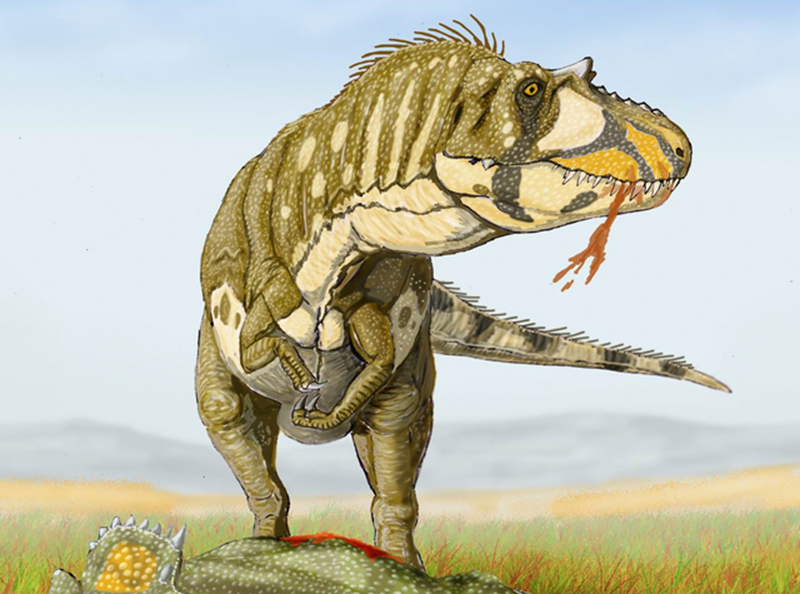The idea of dinosaurs developing agriculture might seem like pure fantasy, but it offers a fascinating thought experiment about evolutionary pathways and intelligence. For 165 million years, dinosaurs dominated Earth’s ecosystems, evolving diverse species with varying levels of intelligence and social complexity. While no evidence suggests dinosaurs ever practiced agriculture, exploring this alternate evolutionary timeline provides insights into both dinosaur capabilities and the unique path that led to human civilization. This speculative journey lets us examine the biological, environmental, and evolutionary factors that would have been necessary for dinosaur farming to emerge and how it might have transformed Earth’s history.
The Intelligence Factor: Could Dinosaurs Have Developed Agricultural Thinking?
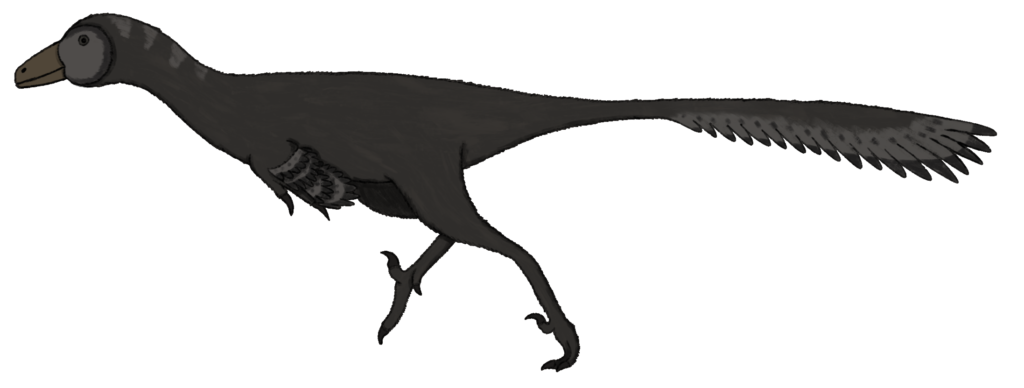
When considering dinosaur agriculture, we must first address cognitive capacity. Some dinosaur species, particularly certain theropods like Troodon and the dromaeosaurids (raptor family), possessed relatively large brain-to-body ratios compared to other dinosaurs of their era. Studies of endocasts—molds of brain cavities—suggest these dinosaurs had expanded cerebral hemispheres that could have supported higher cognitive functions. Troodon, for instance, had one of the highest encephalization quotients among dinosaurs, potentially giving it problem-solving abilities comparable to some modern birds. However, even these “intelligent” dinosaurs fell short of the cognitive complexity seen in great apes or humans. For agriculture to emerge, dinosaurs would have needed not just problem-solving skills but conceptual understanding of plant life cycles, seasonal planning, and tool use—abilities that would have required substantial evolutionary pressure toward enhanced intelligence.
The Anatomy Question: Physical Limitations and Possibilities

Physical anatomy presents another significant hurdle in our dinosaur farming scenario. Most dinosaurs lacked the dexterous appendages that would make agricultural tasks possible. Theropods, with their grasping three-fingered hands, would have had the best chance at manipulating plants and fashioning primitive tools. Species like Deinonychus or Velociraptor could potentially have managed simple planting or harvesting tasks with their clawed forelimbs. Herbivorous dinosaurs like hadrosaurs had specialized dental batteries capable of processing tough plant material, but lacked manipulative appendages entirely. The bipedal stance of many smaller theropods would have freed their forelimbs for potential tool use, similar to how human bipedalism allowed our ancestors to develop increasingly sophisticated hand functions. For dinosaur agriculture to develop, evolutionary pressure would likely have favored more dexterous digits and finer motor control over millions of years.
Social Structures: The Foundation for Agricultural Societies
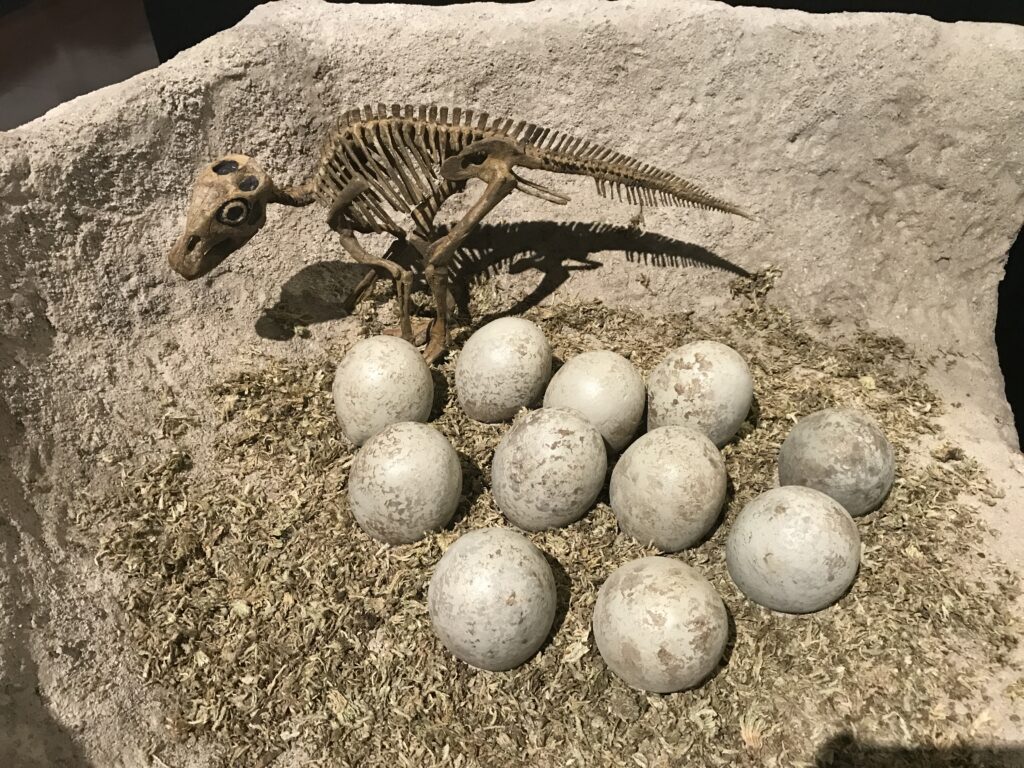
Agriculture doesn’t emerge in isolation—it requires social structures that support knowledge sharing, cooperation, and intergenerational learning. Fossil evidence suggests many dinosaur species exhibited social behaviors, from hadrosaur nesting colonies to pack-hunting in some theropods. Maiasaura, the “good mother lizard,” shows evidence of extended parental care, which could provide a foundation for cultural transmission. Trackway evidence of sauropods and hadrosaurs moving in groups suggests cooperative social structures existed among some dinosaur species. For agriculture to develop, dinosaurs would have needed complex social hierarchies that allowed for labor specialization, with some individuals producing food while others performed different community functions. This level of social complexity would have required communication systems far more sophisticated than any we have evidence for in dinosaurs, perhaps involving vocalizations, displays, or other signals that could convey specific agricultural knowledge across generations.
Environmental Pressures: The Necessity for Farming

Agriculture typically emerges as a response to environmental pressures and resource limitations. In human history, climate change at the end of the last ice age created conditions that made farming a viable alternative to hunting and gathering. For dinosaurs to develop agriculture, similar pressures would need to exist. The late Cretaceous period saw significant climate fluctuations and ecosystem changes that could have created such pressures. Increasing seasonality might have made food supplies less reliable for some dinosaur populations, potentially driving more intelligent species to experiment with plant cultivation. Areas with restricted resources or geographic isolation could have served as evolutionary laboratories where dinosaurs might have begun manipulating their environment to ensure food security. The catastrophic environmental changes that eventually led to dinosaur extinction might, in an alternate timeline, have instead pushed some species toward environmental manipulation and early forms of agriculture as a survival strategy.
First Steps: From Seed Dispersal to Deliberate Planting

The transition to agriculture would likely have begun with accidental cultivation rather than intentional farming. Many modern animals inadvertently practice seed dispersal that benefits certain plants, creating a proto-agricultural relationship. Small, intelligent dinosaurs might have gathered and stored seeds or fruits, with some inevitably sprouting near their nesting areas. Over generations, dinosaurs might have recognized the connection between these food caches and subsequent plant growth. This recognition could have evolved into intentional seed planting in favorable locations, particularly if certain plant species provided reliable nutrition or other benefits. The earliest dinosaur “farming” might have resembled the fungus cultivation practiced by some ant species today—simple management of naturally occurring processes rather than complex agriculture. These initial steps would have required observational learning and basic cause-and-effect reasoning, cognitive abilities that some of the more advanced theropods might conceivably have developed under the right evolutionary pressures.
Dinosaur Domestication: The First Cultivated Crops

If dinosaurs had developed agriculture, their first crops would likely have been quite different from those domesticated by early humans. Flowering plants (angiosperms) only became widespread in the mid-Cretaceous period, so earlier dinosaur farmers might have focused on cycads, ginkgoes, ferns, or conifers. These plants produced nutrient-rich seeds and reproductive structures that already formed part of many herbivorous dinosaurs’ diets. Soft fruits might have been early candidates for cultivation, as they provide readily accessible nutrition and have seeds that germinate easily. Some Cretaceous fruits resembled modern berries and drupes, making them potential candidates for early dinosaur agriculture. Over generations, dinosaur farmers might have selected plants with larger fruits, easier harvesting characteristics, or better tolerance to local conditions, initiating the same kind of artificial selection that transformed wild plants into human crops. This process would have progressed much more slowly than human agricultural development due to the longer lifespans and generation times of both dinosaurs and many Mesozoic plants.
Technological Development: Tools of the Dinosaur Farmer

Tool use would have been essential for dinosaur agriculture to advance beyond the most primitive stages. While no evidence suggests dinosaurs created tools, our alternate timeline might have seen them develop simple implements for agricultural purposes. Sharp-clawed theropods might have used their natural appendages to scratch soil for planting, while others could have utilized found objects like sticks or rocks as rudimentary digging tools. Over time, more advanced dinosaur farmers might have modified natural objects to better serve specific farming functions—perhaps using their teeth to shape wooden implements or selecting stones of particular shapes for specific tasks. Without the ability to create fire or work metal, dinosaur technology would have remained limited to organic materials and unmodified stone. However, even these simple technologies, combined with the cognitive ability to use them purposefully, would represent a significant evolutionary leap that might eventually have led to more complex tool traditions had the K-Pg extinction event not occurred.
Ecological Impact: How Dinosaur Agriculture Would Have Transformed Landscapes

The ecological consequences of dinosaur agriculture would have been profound, potentially triggering cascading effects throughout Mesozoic ecosystems. Cleared areas for cultivation would have created new niches for opportunistic species, while potentially reducing habitat for others. The selection and concentration of preferred food plants would have altered plant community composition and potentially accelerated plant evolution through artificial selection. Dinosaur farmers might have actively eliminated competitors and predators from their agricultural areas, changing local food webs and predator-prey dynamics. Water management for crop irrigation could have altered local hydrology, creating new wetland habitats or diverting water from natural systems. The concentration of resources in agricultural areas would have attracted non-farming dinosaurs and other animals, creating new competitive interactions and potentially driving further cognitive evolution. This ecological transformation might have resembled the dramatic landscape changes triggered by early human agriculture, though operating on different spatial and temporal scales appropriate to dinosaur biology.
Evolutionary Consequences: The Rise of the Dinosaur Civilization

Had dinosaurs developed agriculture, the evolutionary consequences would have been revolutionary. Agricultural success would have created strong selection pressure for enhanced intelligence, better communication, and improved manual dexterity. The reliable food supply would have allowed population growth and increased social complexity, potentially leading to specialization of labor beyond farming. With food security established, some dinosaurs might have devoted time to other technological developments, accelerating the pace of innovation. Settlement around agricultural centers would have created the first dinosaur “villages,” with permanent structures and territories. These developments would have dramatically altered dinosaur anatomy over millions of years, potentially producing bipedal, large-brained, dexterous descendants quite different from any actual dinosaur that ever lived. The evolutionary pathway might have paralleled the one that led from our ape ancestors to modern humans—a process driven by the cognitive and social demands of increasingly complex technological and agricultural systems.
Climate Adaptation: Farming Through Changing Conditions
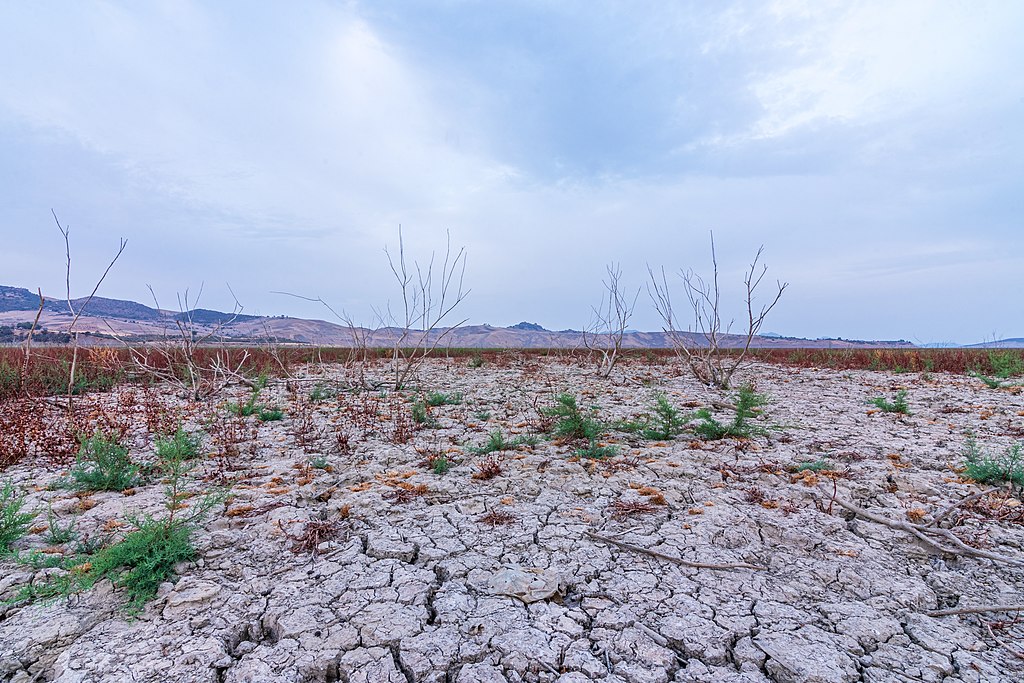
The Mesozoic era saw numerous climate fluctuations that would have challenged dinosaur farmers. The generally warm climate of the dinosaur age featured periods of cooling and warming that would have required agricultural adaptation. Late Cretaceous cooling would have pushed dinosaur agriculture to develop cold-hardy crop varieties or seasonal planting strategies to maintain food production. Shifting rainfall patterns would have necessitated irrigation technologies in some regions, potentially leading to the development of simple water management systems. Dinosaur farmers might have learned to use natural indicators like plant flowering times or animal migrations to time their planting and harvesting activities. These agricultural adaptations would have required significant observational skills and the ability to modify behaviors based on environmental conditions—cognitive abilities that would have continued to evolve as climate challenges intensified. The ability to maintain food production through changing conditions would have given farming dinosaurs a significant advantage over their non-farming relatives, further accelerating their cognitive and technological evolution.
Societal Structures: From Packs to Agricultural Communities
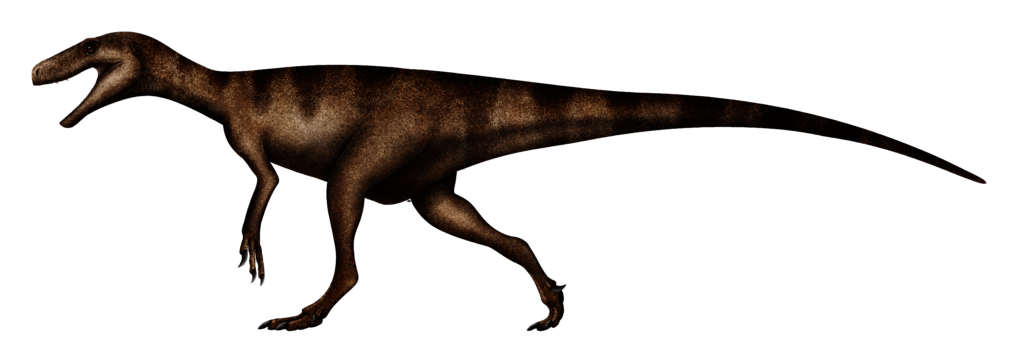
The transition to agriculture would have fundamentally transformed dinosaur social structures. Early farming communities might have developed from family groups or small packs of social theropods, gradually expanding as agricultural success allowed population growth. Agricultural settlements would have required new forms of social organization to manage resources, resolve conflicts, and coordinate communal activities like planting and harvesting. Food storage would have created the concept of property and potentially led to social stratification based on agricultural success or control of prime farming land. Specialized roles might have emerged—some dinosaurs becoming expert at seed selection, others at predator defense, and still others at tool creation. Communication systems would have grown increasingly sophisticated to accommodate these complex social interactions, potentially evolving into proto-language systems with specific vocalizations or gestures for agricultural concepts. These agricultural communities would have created evolutionary pressure for enhanced social cognition, including theory of mind abilities that allowed dinosaur farmers to understand and predict the behavior of their community members.
The Asteroid Impact: Would Farming Have Saved the Dinosaurs?

The Chicxulub asteroid impact that triggered the K-Pg extinction event poses an intriguing question for our alternate timeline: could agricultural dinosaurs have survived this catastrophe? The impact created a “nuclear winter” scenario with dramatically reduced sunlight for months or years, collapsing food chains dependent on photosynthesis. Agricultural dinosaurs might have had advantages in this scenario—stored food supplies could have sustained small populations through the initial crisis period. Their experience with deliberate planting and cultivation might have allowed them to accelerate ecosystem recovery in local areas once conditions improved. The cognitive flexibility developed through agricultural problem-solving might have helped them adapt to the drastically altered post-impact world. However, the global nature and severity of the extinction event would still have presented nearly insurmountable challenges. Even with agriculture, dinosaur farmers would have faced collapsed ecosystems, extreme climate disruption, and toxic environmental conditions. Their larger body sizes compared to the mammals that did survive would have required more resources during a time of extreme scarcity. While agriculture might have improved their chances slightly, the evolutionary cards were stacked against them in ways that even the most sophisticated dinosaur farming couldn’t overcome.
Lessons for Human Agriculture: What We Can Learn from This Thought Experiment

This speculative journey through dinosaur agriculture offers surprising insights for our agricultural systems. The thought experiment highlights how contingent our agricultural development was on specific evolutionary features—our manual dexterity, social structures, and cognitive capabilities that emerged through a unique evolutionary pathway. It reminds us that agriculture isn’t merely a technological development but a biological relationship between cultivator and cultivated species that transforms both parties through coevolution. The challenges dinosaur farmers would have faced with climate fluctuations parallel our struggles with agricultural adaptation to climate change, emphasizing the importance of flexibility and diversity in farming systems. The potential ecological transformations of dinosaur agriculture mirror the profound landscape changes caused by human farming, highlighting agriculture’s role as a powerful force for environmental modification. Perhaps most importantly, this scenario illustrates how agriculture serves as both a response to environmental pressures and a driver of further biological and cultural evolution—a dynamic we see continuing in human agricultural systems today as we develop new technologies to address emerging challenges.
Imagining an Agrarian Dinosaur Civilization
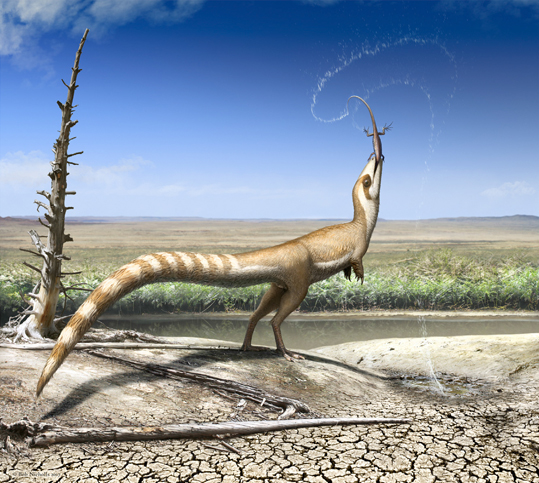
While dinosaurs never developed agriculture in reality, imagining this alternative evolutionary path helps us appreciate the remarkable conjunction of biological capabilities, environmental conditions, and evolutionary pressures that allowed humans to make this transition. It also reminds us that intelligence and technology can evolve in many forms, and had the asteroid missed Earth 66 million years ago, the subsequent evolution of dinosaurs might have taken fascinating and unexpected directions. Though we’ll never know what might have been, the exercise of imagining dinosaur farmers tending their primitive crops provides a fresh perspective on our agricultural history and the complex interplay between biology, ecology, and technology that shapes life on Earth.

